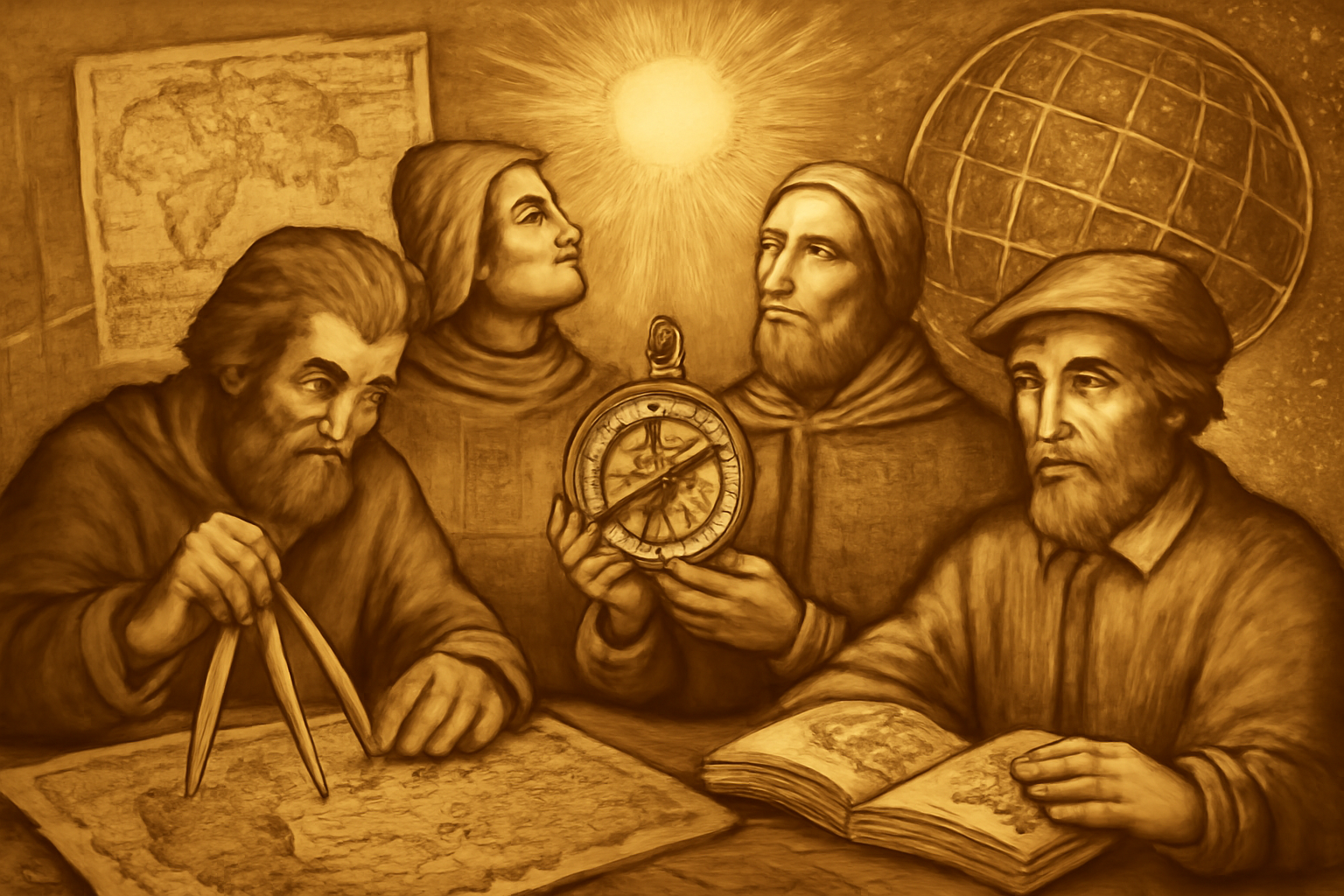The years surrounding 1520 marked an extraordinary chapter in the history of mathematics, a period brimming with intellectual quests, practical innovations, and the vibrant energy of Renaissance humanism. This was an era where ancient wisdom met bold new ideas, setting the stage for the revolutionary developments that would shape the future of science and technology.
At the heart of this mathematical awakening was Girolamo Cardano, the brilliant Italian mathematician whose work De adaequationibus pushed the boundaries of algebra. Around 1520-21, Cardano explored solutions to cubic equations — problems that had puzzled mathematicians for centuries. By delving into these complex polynomial equations, he laid foundational stones for algebra’s future, moving beyond the quadratic equations that had dominated earlier study. Though Cardano’s most famous work, Ars Magna, was published later in 1545, his early investigations during this period foretold a new era of mathematical problem-solving.
Meanwhile, the political and religious landscape also influenced the intellectual climate. While the Edict of Nantes itself was issued later in 1598, the early 16th century was witnessing the initial stirrings of religious tolerance in parts of Europe, especially in France, which gradually fostered an atmosphere where scholars could pursue learning relatively freely. This climate provided fertile ground for mathematicians, astronomers, and natural philosophers to exchange ideas without fear of persecution, promoting a culture of curiosity and progress.
Numbers themselves were undergoing transformation. The widespread adoption of decimal notation, inspired by earlier advances from Indian mathematicians and popularized in Europe through translations and manuals, began to simplify calculations dramatically. Decimal fractions replaced cumbersome fractions and Roman numerals, making arithmetic accessible to merchants, navigators, and scientists alike. This decimal system unlocked new potential in commerce and scientific measurement, empowering explorers during the Age of Discovery and enabling more precise astronomical observations.
All this mathematical ferment was intimately tied to Renaissance humanism, the powerful intellectual movement which sought to recover and harmonize the knowledge of antiquity with contemporary thought. Humanists eagerly translated, edited, and taught ancient texts from Greek mathematicians like Euclid, Archimedes, and Ptolemy, making their elegant geometrical and numerical insights accessible to a new generation of scholars. This blending of classical knowledge with innovative methods led to advances in perspective in art, improved navigation techniques, architectural precision, and the early stirrings of what would become modern science.
In essence, the early 1520s were more than just a date on the timeline; they marked a turning point where mathematics blossomed into a vibrant discipline with practical and theoretical depth. From Cardano’s algebraic explorations to Pacioli’s accounting manuals, from the spread of decimal notation to the encouragement of freer intellectual exchange, these years set a firm foundation for the scientific revolutions that would follow.
Mathematics during 1520-21 was not just about numbers and equations — it was about the bold act of transforming how humans understand and interact with the world. It was a story of curiosity, courage, and creativity, woven deeply into the fabric of Renaissance culture and the unfolding Age of Discovery.
